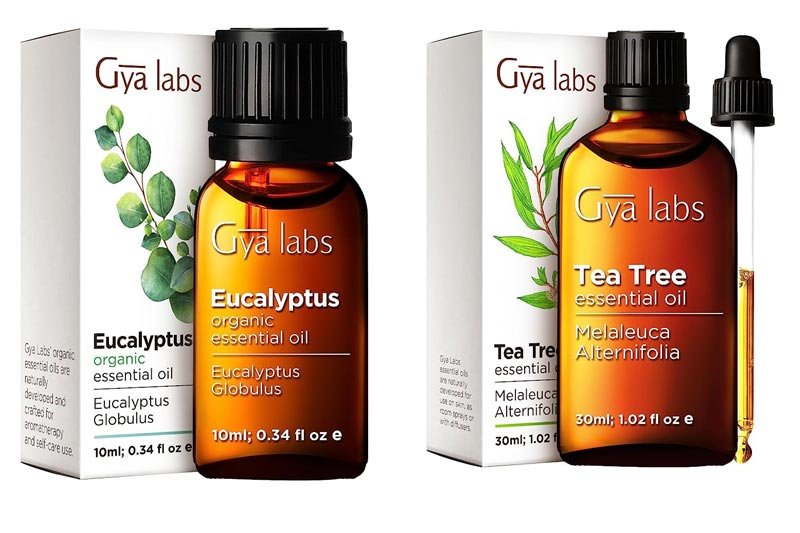The Best Essential Oil for Toenail Fungus : Our feet work tirelessly, bearing the weight of our daily activities. However, when toenail fungus strikes, it can turn those essential body parts into a source of discomfort and embarrassment. Toenail fungus, medically known as onychomycosis, is a common condition characterized by the invasion of fungi beneath the toenail. It often causes the nails to become discolored, thickened, and brittle, leading to pain and potential self-consciousness.
While there are numerous treatments available, both natural and pharmaceutical, one essential oil stands out as a formidable weapon against toenail fungus: tea tree oil. Renowned for its potent antifungal and antibacterial properties, tea tree oil has gained popularity as a trusted remedy for a wide range of ailments, including skin conditions, acne, and dandruff.
In this blog post, we will explore the remarkable qualities and effectiveness of tea tree oil on toenails in combating fungus. We will delve into its history, examine its scientific background, discuss its application methods, and provide you with practical tips on incorporating this powerful essential oil into your toenail fungus treatment regimen.
Best Essential Oils for Toenail Fungus
-
Eucalyptus Oil
Eucalyptus oil, derived from the leaves of the eucalyptus tree, is well-known for its respiratory benefits. However, it also possesses antifungal properties that can be effective against toenail fungus. The active compound in eucalyptus oil amazon, called cineole, exhibits strong antifungal activity, making it a valuable addition to your nail care regimen.

-
Tea Tree Oil
Tea tree oil, derived from the leaves of the Melaleuca alternifolia tree, is renowned for its powerful antifungal, antibacterial, and antiseptic properties. It has been used for centuries in traditional medicine to treat various skin conditions, including toenail fungus. Tea tree oil contains compounds called terpenes, such as terpinen-4-ol, which exhibit strong antifungal activity, making it an excellent choice for combating toenail fungus.
-
Oregano Oil
Oregano oil is derived from the leaves and flowers of the oregano plant. It contains a compound called carvacrol, which possesses potent antifungal properties. Studies have shown that oregano oil can effectively inhibit the growth of fungi responsible for toenail infections. Its natural properties make it an appealing option for those seeking a natural alternative to conventional antifungal treatments.
-
Lavender Oil
Known for its soothing and calming scent, lavender oil also harbors antifungal properties. It contains compounds like linalool and linalyl acetate that have been found to inhibit the growth of fungi. Lavender oil not only combats toenail fungus but also helps reduce inflammation and promote relaxation, making it a versatile choice for nail care.
-
Lemongrass Oil
Lemongrass oil, derived from the tropical plant Cymbopogon citratus, is rich in citral and geraniol, which possess antifungal properties. Its refreshing citrus scent and ability to inhibit fungal growth make it an appealing choice for toenail fungus treatment. Lemongrass oil also has antibacterial properties that can help prevent secondary infections.
How To Use for Toenail Fungus
Using essential oils for toenail fungus can be an effective and natural approach to treat the condition. Here are some guidelines on how to use essential oils for toenail fungus:
- Dilute the essential oil: Essential oils are highly concentrated and can be harsh on the skin if used undiluted. Mix a few drops of the chosen essential oil with a carrier oil such as coconut oil, olive oil, or sweet almond oil. Diluting the essential oil helps to reduce the risk of skin irritation while still delivering its antifungal properties.
- Cleanse the affected area: Before applying the essential oil mixture, make sure to clean the affected toenail thoroughly. Use a mild soap and warm water to gently wash the area, and pat it dry. This step helps remove any dirt or debris that may hinder the absorption of the essential oil.
- Apply the diluted essential oil: Using a clean cotton swab or a small brush, carefully apply the diluted essential oil mixture to the affected toenail and surrounding area. Ensure that the entire nail and the nearby skin are covered. Be gentle and avoid pressing too hard, as toenails affected by fungus can be fragile.
- Let it absorb: Allow the essential oil mixture to absorb into the nail and skin. It’s best to leave it on without rinsing it off, as this allows the oil to work its magic and penetrate the affected area. However, if you experience any discomfort or irritation, rinse the area with water and discontinue use.
- Repeat regularly: Consistency is key when using essential oils for toenail fungus. Apply the diluted essential oil mixture to the affected toenail at least twice daily—morning and evening. It may take several weeks or even months for noticeable improvement, as toenail fungus can be stubborn. Patience and regular application are essential for effective results.
- Practice good foot hygiene: Along with using essential oils, it’s crucial to maintain proper foot hygiene to prevent the spread and recurrence of toenail fungus. Keep your feet clean and dry, wear breathable socks made of natural fibers, and avoid walking barefoot in public areas. Trim your toenails straight across to prevent further damage.
- Monitor for any adverse reactions: While essential oils are generally safe, everyone’s skin reacts differently. Pay attention to any signs of skin irritation, redness, or allergic reactions. If you experience any discomfort, discontinue use and consult a healthcare professional.
Remember, essential oils are not a substitute for professional medical advice. If your toenail fungus persists, worsens, or causes severe pain, it’s essential to seek guidance from a healthcare professional for proper diagnosis and treatment options.
Safety Precautions To Take
While using essential oils for toenail fungus can be beneficial, it is important to follow safety precautions to ensure a positive and safe experience. Here are some important safety precautions to take:
- Patch test: Before using any essential oil, perform a patch test to check for potential skin sensitivities or allergies. Apply a small amount of the diluted essential oil mixture to a small area of skin on your forearm and wait for 24 hours to observe any adverse reactions. If you experience redness, itching, or irritation, avoid using that particular essential oil.
- Proper dilution: Always dilute essential oils before applying them to the skin. Essential oils are highly concentrated and can cause skin irritation or sensitization if used undiluted. Follow recommended dilution ratios, typically using a few drops of essential oil with a carrier oil, such as coconut oil or olive oil.
- Choose high-quality oils: Ensure that you are using high-quality essential oils from reputable sources. Look for oils that are pure, organic, and free from additives or synthetic chemicals. Low-quality oils may not provide the desired therapeutic benefits and may even cause adverse reactions.
- Avoid contact with eyes and mucous membranes: Essential oils are potent and can cause irritation if they come into contact with sensitive areas such as eyes or mucous membranes. Be cautious when applying the oil near these areas, and if accidental contact occurs, rinse thoroughly with water.
- Use caution during pregnancy and with certain medical conditions: Pregnant women, nursing mothers, and individuals with underlying medical conditions should exercise caution when using essential oils. Some essential oils may not be suitable for certain health conditions or may require guidance from a healthcare professional. Consult with a healthcare provider before using essential oils if you have any concerns.
- Do not ingest essential oils: Essential oils should not be ingested unless under the guidance of a qualified aromatherapist or healthcare professional. Ingesting essential oils can be toxic and lead to serious health complications.
- Store essential oils properly: Essential oils should be stored in dark, glass bottles in a cool, dry place away from direct sunlight. Proper storage helps maintain their potency and extends their shelf life.
- Keep essential oils out of reach of children and pets: Essential oils should be kept out of reach of children and pets to prevent accidental ingestion or misuse.
Conclusion
In conclusion, essential oils offer a natural and promising approach to combat toenail fungus. With their potent antifungal properties, oils like tea tree, oregano, lavender, lemongrass, and eucalyptus can help alleviate the symptoms and promote the healing of affected nails. However, it is crucial to follow safety precautions such as proper dilution, patch testing, and consulting with a healthcare professional when necessary. Additionally, maintaining good foot hygiene and being consistent in the application of essential oils are key factors in achieving positive results. By incorporating these guidelines, you can embark on a holistic journey towards healthier and fungus-free toenails, restoring confidence and comfort to your stride.
Related Videos about The Best Essential Oil for Toenail Fungus :
The Best Essential Oil for Toenail Fungus
nail fungus essential oil blend recipe, essential oils for toenail fungus dr axe, eucalyptus oil for toenail fungus reviews, essential oil recipe for toenail fungus, how to use clove oil for fungal infection, does tea tree oil kill fungus on skin, essential oils for fungus on skin, how to dilute oregano oil for toenail fungus,




